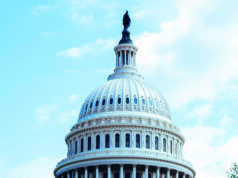
One of the most gratifying aspects of working to advocate for surgeons is that, at its heart, this is completely transparent and is done simply to serve. Serve what? To serve surgeons, by supporting their ability to flourish in practice, pushing back against the seemingly endless accumulation of regulatory and other encumbrances, and focusing a light on surgeon well-being.
To serve our patients, by advocating for the highest quality care and tackling impediments to access. To serve our mission, by raising public and patient awareness of the role of vascular surgery and highlighting the importance of research, care innovation and the healthy growth of the vascular surgeon workforce.
Over the years, the Society for Vascular Surgery (SVS) has built a robust infrastructure to serve its members through advocacy, supported by both surgeon volunteers on its committees and councils and by an expert professional staff, based both in Rosemont, Illinois, and Washington, D.C. The Policy and Advocacy Council works closely with policy and advocacy staff to facilitate communication and coordination among its member committees, across councils, with the Strategic Board.
The Council’s committees include: Government Relations, which takes the lead on federal legislative and regulatory issues; Coding, which plays a critical role through the American Medical Association’s Relative Value Scale (RVS) Update Committee (RUC) and beyond in the valuation and reimbursement of vascular services; the PAC Steering Committee, which raises and disburses funds to support all advocacy efforts; the VA Vascular Surgeons Committee, representing the unique position and perspective of the U.S. Department of Veterans Affairs (VA) surgeons and veterans; and the Performance Measures Committee, doing duty across councils to ensure alignment.
What does coordination and collaboration of advocacy across the SVS mean? This means that the policy and priorities of the entire society are drawn from the expertise of the councils and committees and the values of our vascular surgeon members. The Clinical Practice Council, for example, has helped define our advocacy agenda through the recommendations developed by the Wellness Committee, the insight into the impact of current payment policies offered by the Section on Outpatient and Office Vascular Care (SOOVC), and the initial work of the Population Health Task Force. Once policy and priorities are set, the SVS continues to serve through its three advocacy pillars: grassroots, political and legislative advocacy.
Our professional staff is continually working to move our priorities forward in D.C. And as Andrew Kenney wrote a few months ago, this operation is infinitely stronger with the support of surgeons engaging our legislators through in-person meetings, letters, calls, and social media in a grassroots campaign. So when you think of advocacy, know that SVS advocacy truly exists to serve. To get involved, reach out at [email protected].
Margaret C. Tracci is the chair of the SVS Advocacy Council.












